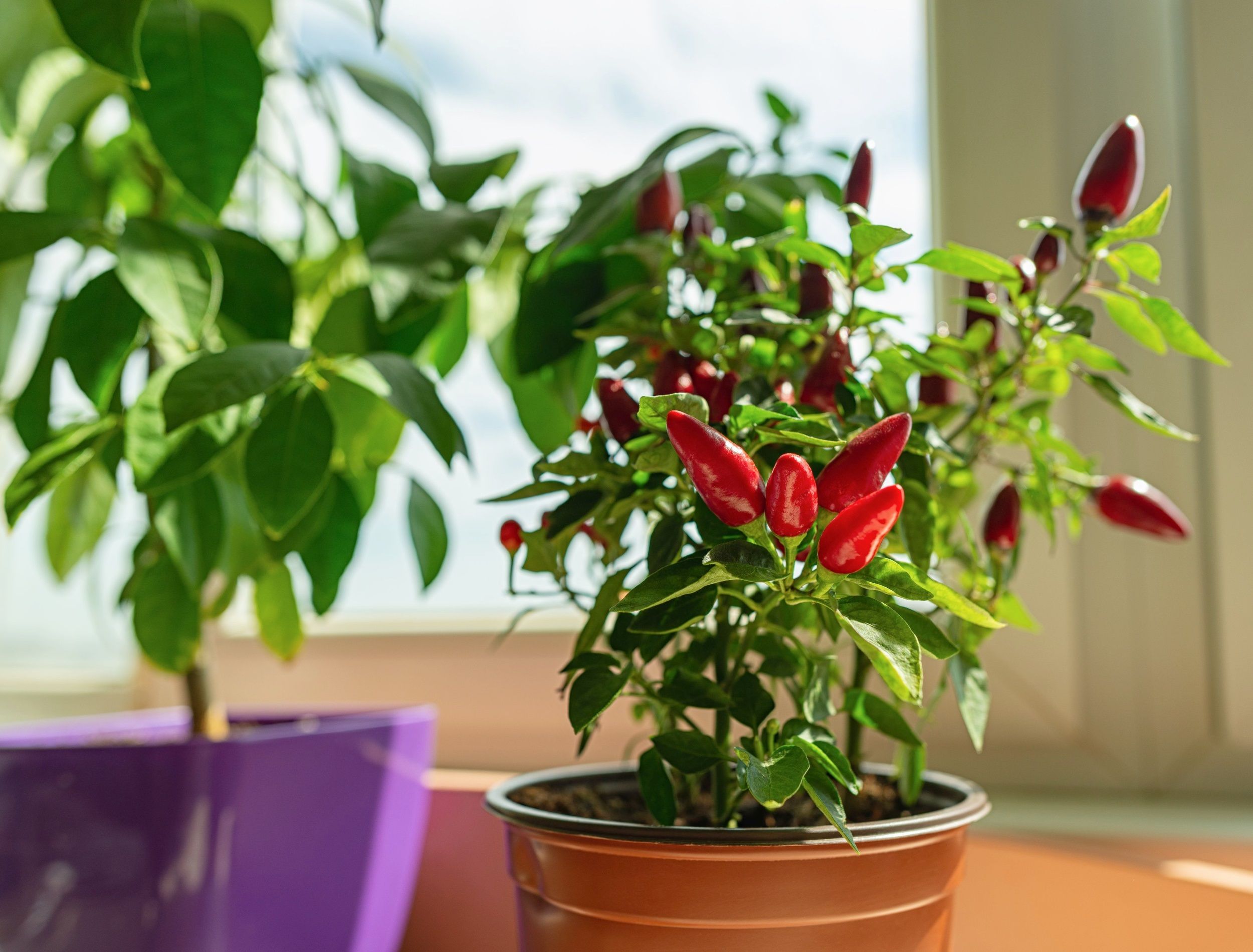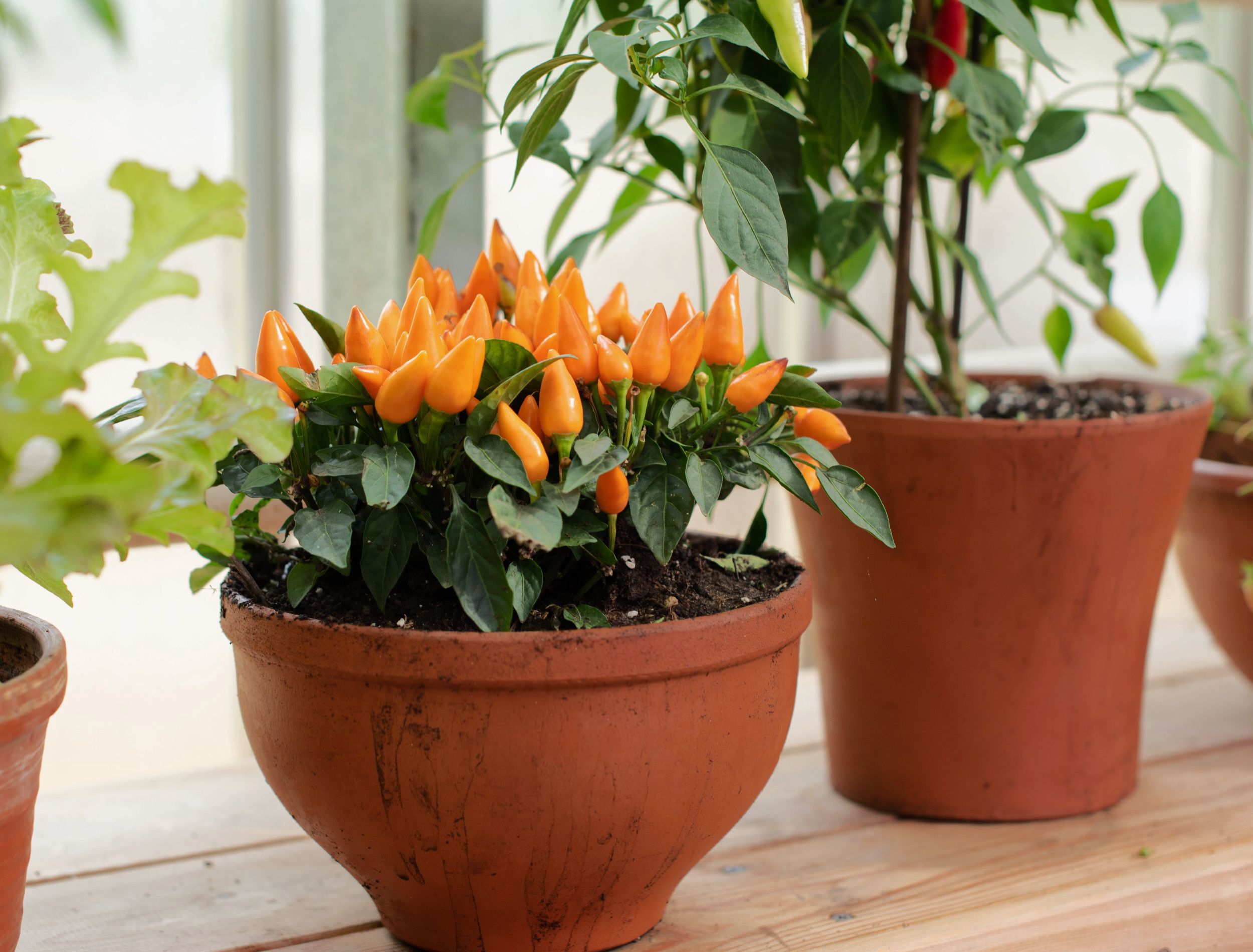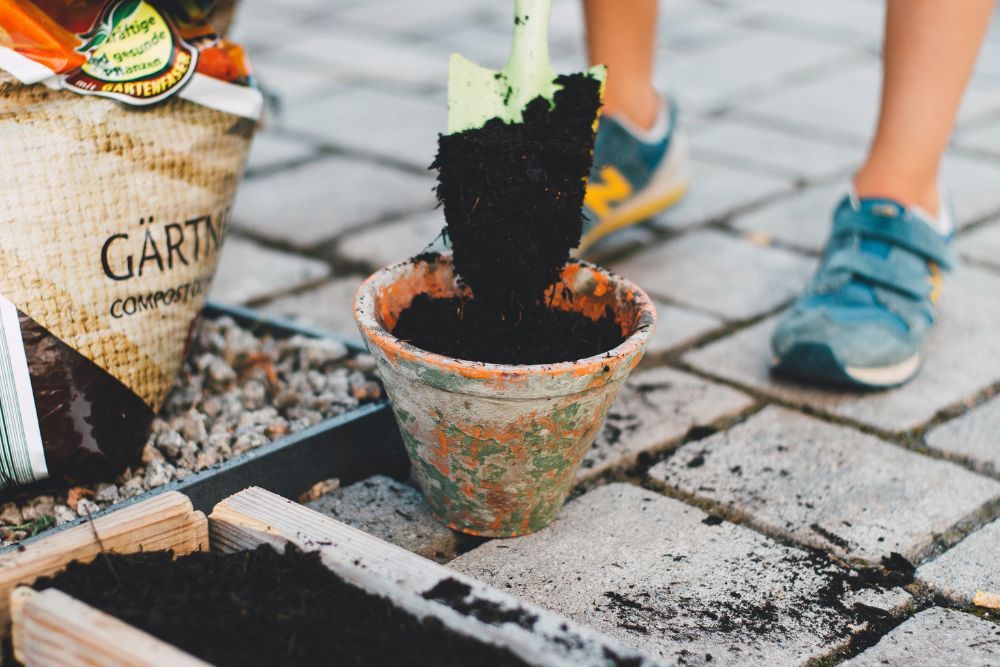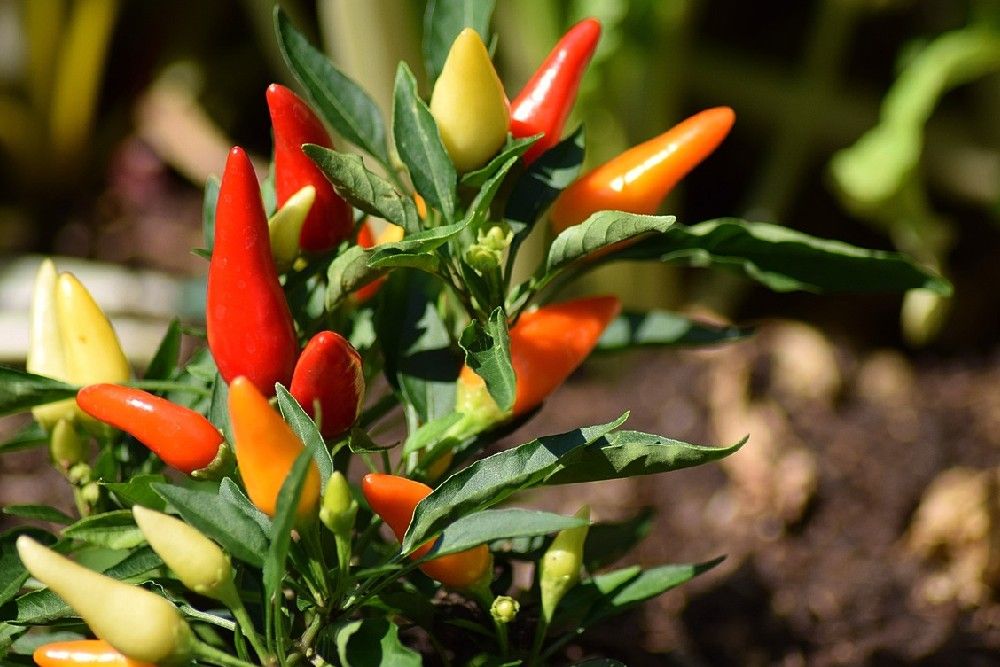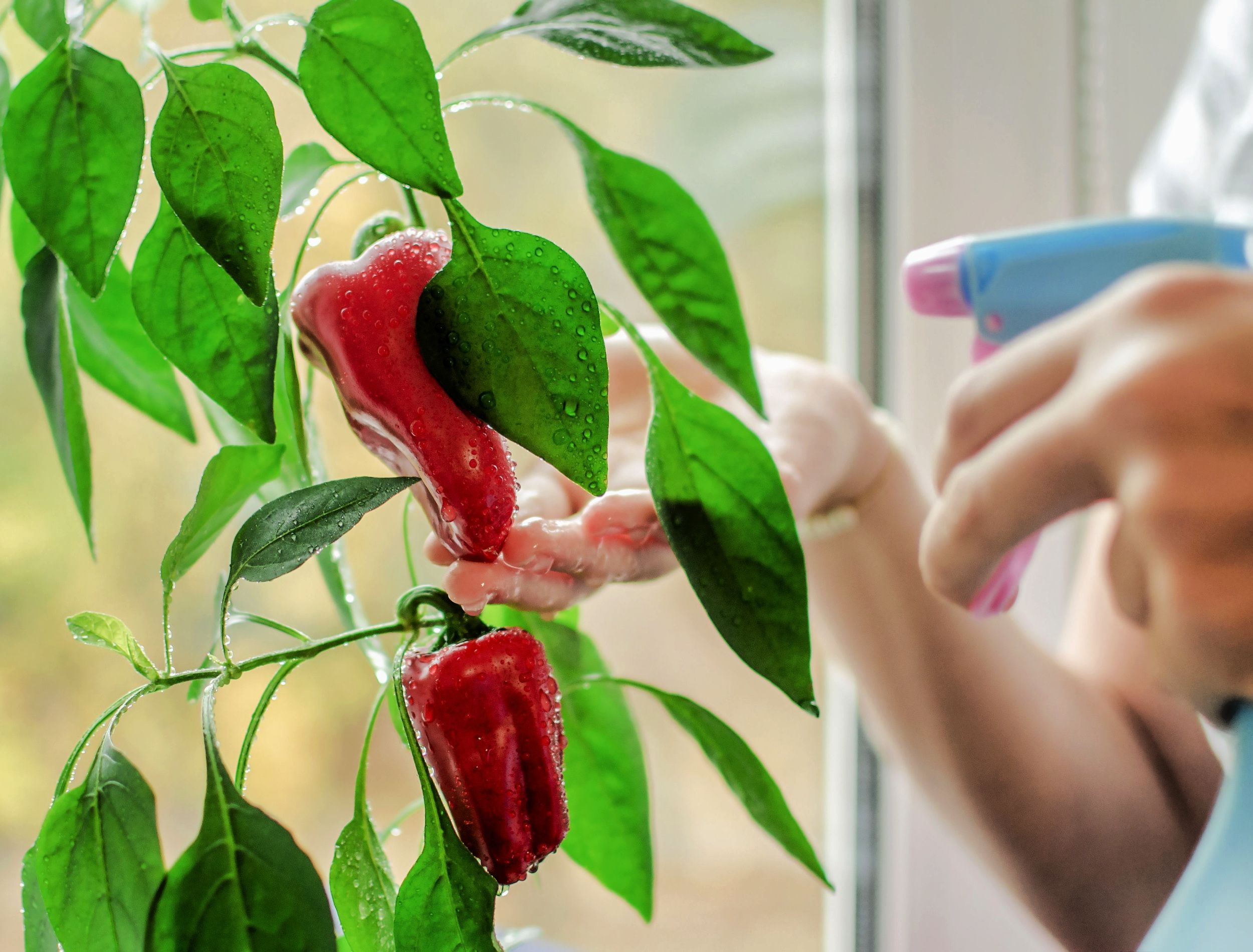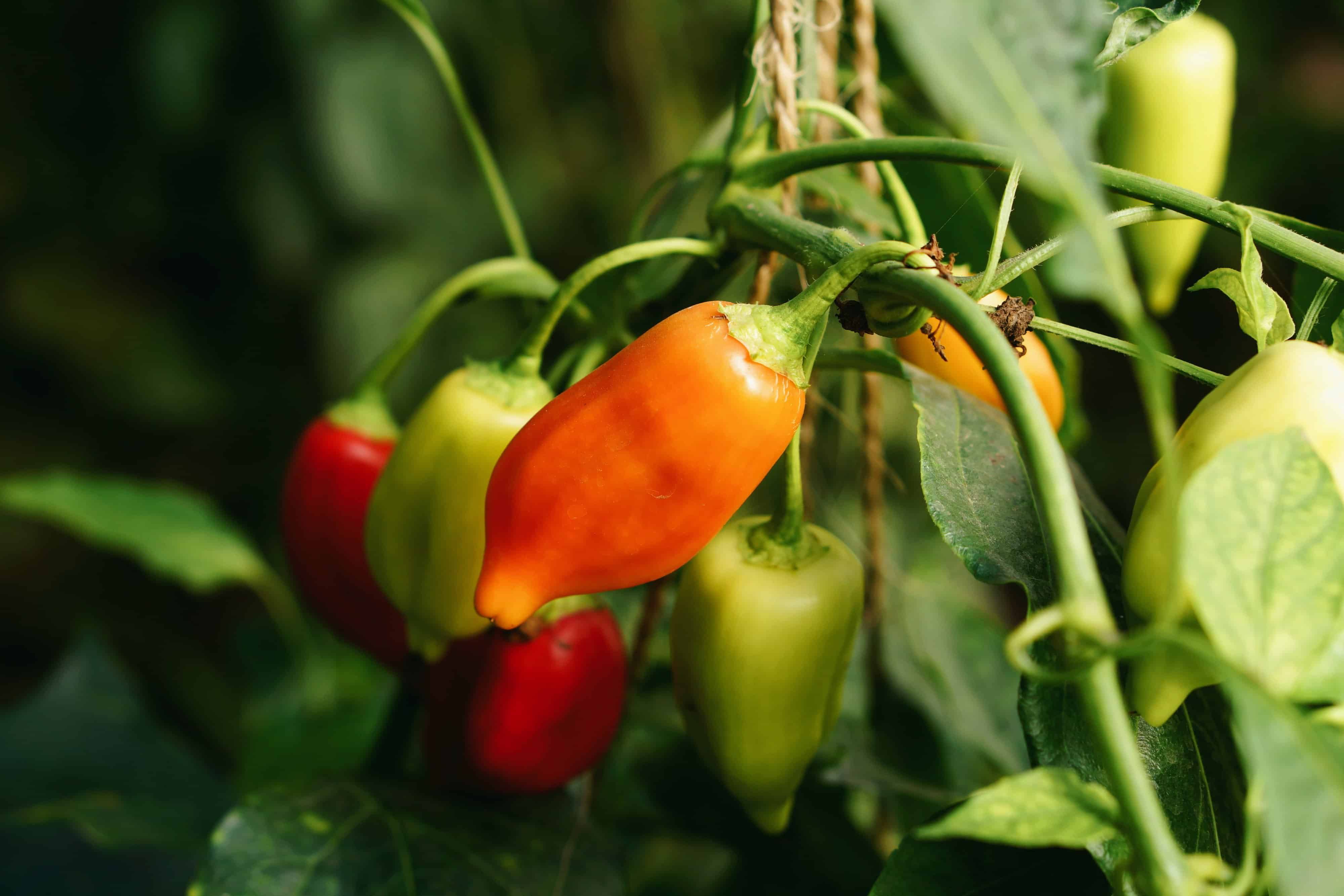If you are planning to start a vegetable garden or want to try growing something new, grow peppers! These fiery hot, occasionally sweet fruits taste best when grown fresh in your home. The best part is that you can grow these compact plants indoors if you lack an outdoor area. All you need is patience and tender, loving care.
Here are six tips for growing beautiful, glossy, vibrant peppers inside your home.
1. Go for the Correct Variety
Image credits: KlavdiyaV via Shutterstock
Your first course of action when growing peppers in a container is to select the appropriate variety. Ideally, if you have limited space, grow smaller varieties that pack a punch. Some popular varieties include:
- Thai peppers
- Sweet, vibrant capsicums
- Smoky cayenne peppers
- Fiery habanero
- Classic jalapeños.
Moreover, you can use the pepper plant as a decorative houseplant. The peppers stand out from the foliage to show off the vibrant harvest in shades of green, yellow, orange, and red.
2. Choose the Right Pot
Image credits: HeungSoon via Pixabay
Whether growing your peppers from seed or buying seedlings from a nursery, you need a suitable container as a forever home for the growing plant.
Opt for a large container, around 8 to 10 inches, to allow the roots ample space to grow. You can also use a 5-gallon container to transplant several seedlings in a single pot. The pot must have drainage holes to allow the excess water to drain out. The absence of holes at the bottom of the container can lead to waterlogged soil and root rot.
3. Pay Attention to the Soil
Image credits: Markus Spiske via Pexels
Peppers prefer well-draining, organically rich soil. Since you are using a large pot, look for soil labeled as suitable for these containers and your specific peppers conditions. You can also use a soilless mixture of sphagnum peat or composted bark mixed with equal parts of vermiculite or perlite.
Like most plants, peppers will benefit from regular feeding every three weeks; They love nitrogen, phosphorus, and potassium. Before your plant starts blooming, use a well-balanced fertilizer with a 1-1-1 ratio. Post flowering, switch to a high-potassium fertilizer for optimal growth and a big, juicy yield.
4. Light and Temperature
Image credits: HansLindevia Pixabay
Peppers require daily exposure to six to eight hours of direct sunlight, especially during the growing season. If possible, place your container near a south-facing window to expose it to at least six hours of bright sunlight. Alternatively, you can keep it near an east or west-facing window because they provide proper exposure to indirect sunlight for about six hours daily.
You can also use artificial light to supplement your home's lack of natural light. Keep your peppers under ordinary fluorescent light with a cool or warm white tube for 16 hours daily. Maintain a distance of 3 inches between the plant and the lamp, moving the light upwards as the plant grows.
The best time to grow peppers is during summer since peppers grow best in warm temperatures between 70 to 85 degrees Fahrenheit. Keep in mind that if you provide artificial light, the fluorescent bulb will raise the temperature by approximately 10 degrees Fahrenheit around your plant, so you will need to adjust accordingly.
5. Water Timely
Image credits: Kartinka via Shutterstock
Most pepper varieties do not need a lot of water. However, they still need routine watering of about an inch per week to keep them growing.
To determine whether your plant is ready for hydration, dig your fingers about 4 inches in the soil, and if it feels dry, water the soil. Also, pick up your container -- If it feels light, the plant needs water.
Give your pepper plant a good drink early in the morning to give the sun ample time to dry out excess water and any droplets from the leaves. Watering them in the evening or later can result in waterlogging, leading to disease and fungal growth.
You can water the pepper plant with ordinary tap water, but let it sit overnight in a container before using it.
6. Occasional Problems
Image credits: Jeppe Vadgaard via Unsplash
One of the most likely problems that can occur when growing peppers is overwatering. Overwatering the peppers can lead to stunted growth and may even kill the plant.
Drenching your plant creates wet, humid conditions opposite the warm and dry environment ideal for the plant. It can also wash away the soil's nutrients before the roots absorb them. Excess moisture can also promote pest and disease attacks.
The two major signs of overwatering are discolored leaves and rotting roots. The discoloration manifests as yellowing leaves that are limp (underwatering also causes yellow leaves, but they are dry and brittle).
The second, albeit less likely, the problem is an infestation of insects, such as aphids. You can easily notice these insects as they secrete sticky honeydew that is visible on the plant. To remove aphids, use your hands to scrap the growth from your precious peppers.
Plant Peppers in Pots
You can still enjoy homegrown peppers even if you live in a colder region or do not have a backyard or a balcony. These versatile plants can be fussy about water and light, but they are not impossible to grow at home, and the plant looks stunning once it starts bearing fruits.
So, are you excited to start growing peppers at home? Share below in the comments!

